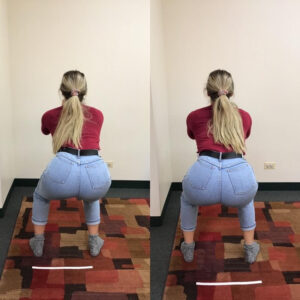Post Procedure – Hip Repair and Still in Pain
Medical Procedures: Add some Bridging for Additional Recovery
Injuries happen any time of the year, whether from sports, accidents or daily living. When the pain is bad enough, an MRI may show a tear. This type of injury generally needs some surgical help for repair.
We recently met a college athlete who still had pain in her hip almost a year after surgery. She diligently followed the usual recovery steps doing physical therapy for mobility and strengthening. Sometimes, however, even those efforts aren’t enough to fully restore your movement or reduce the pain.
Bridging takes a look at the injury from another perspective of movement, which often yields another insight and solution. After one session she left the office able to move without pain; what we found had little to do with the injury or the surgery. Read why.
The repaired hip still hurts. Why?

The athlete has had a number of evaluations to figure out why her hip was still an issue almost a year post-surgery for a torn labrum.
A fresh perspective was needed. At Kinetic Konnections we ponder additional questions while we assess:
- What other injuries had happened before, even at younger ages?
- What might have arisen from post-surgical compensations?
- Was everything working together correctly to start with?
The body is a system; often where you have pain is not where the issue is
Interestingly, we found that her core on the side of the painful hip was immobile. Also, her shoulder was not moving well. We asked ourselves:
- Did lack of core movement cause the stress at the hip leading to the torn labrum?
- Did the shoulder restriction cause a rotation in her core which stressed the hip? Or was that related to using crutches for weeks while recovering?
Different questions pointed to a different issue allowing for a different solution.
 We got to work supporting her core to allow movements to re-organize. In short order, her core was moving, legs and arms were moving, and overall movement was symmetrical. One last centering movement while standing allowed her squat to center and feel good!
We got to work supporting her core to allow movements to re-organize. In short order, her core was moving, legs and arms were moving, and overall movement was symmetrical. One last centering movement while standing allowed her squat to center and feel good!
In reality this is a process. Although there is better movement at her hip there is still more to do. We look forward to her next break from school for the next steps.
Wondering if Bridging can help you?
When you have a medical procedure done, let Kinetic Konnections be your next stop. All invasive procedures have some impact to the fluency of movement in your body. The stress created often translates into pain or tightness for you.
Often in one or two sessions our use of the Bridging Technique’s gentle movements restores your movement in the impacted area. You feel better, and often the area looks better! Less swelling, better movement, better coloration, and faster overall recovery.

